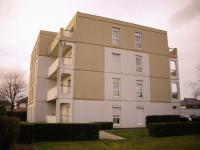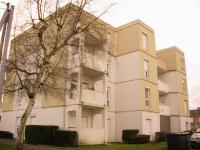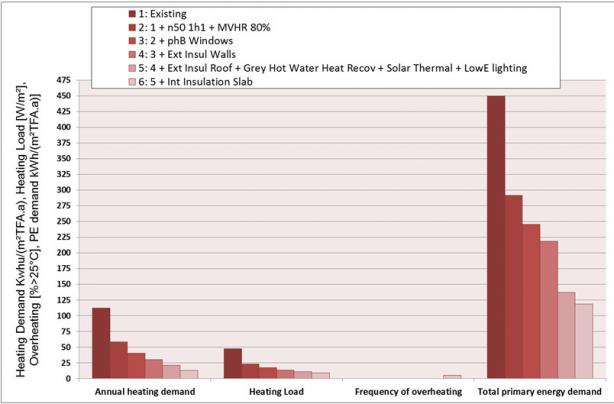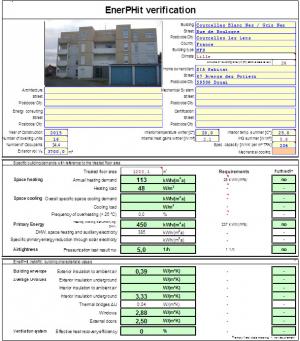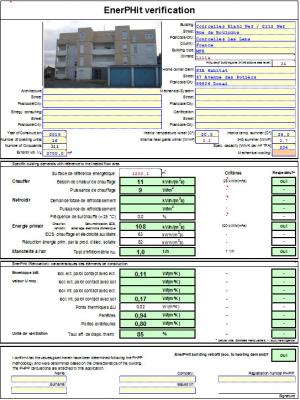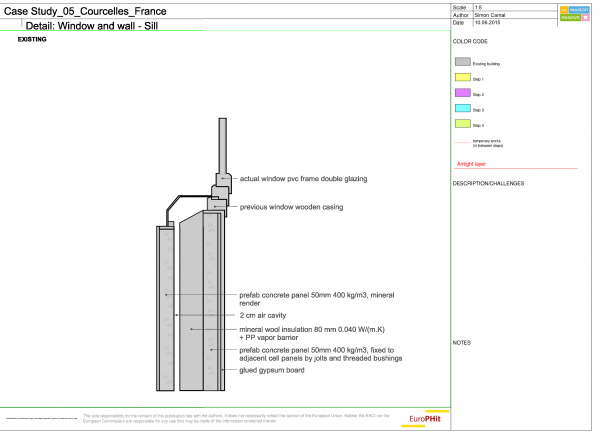- Home
- Energy Retrofits
- Projects
- Finance
- Financial workshops
- 1st Financial workshop - London, UK
- 2nd Financial workshop - Bratislava, SK
- 3rd Financial workshop - Copenhagen, DK
- 4th Financial workshop - Dublin, IE
- 5th Financial Workshop - Milan, IT
- 6th Financial Workshop - Leipzig, DE
- 7th Financial Workshop - Sofia, BG
- 8th Financial Workshp - Sophia, BG
- 9th Financial Workshop - Växjö, SE
- 10th Financial Workshop - Barcelona, ES
- 11th Financial Workshop - Barcelona, ES
- 12th Financial Workshop in Paris, France
- Final Financial Workshop
- Questionnaires
- Financial workshops
- Products
- Events/Awards
- Downloads
CS05 Multifamily social housing in Courcelles-lès-Lens
Current status:
IN TENDER PROJECT
Country:
France
Building Owner:
SIA Habitat
Consulting EuroPHit Partner:
LaMP - Contact person Simon Camal
Existing treated floor area (usable floor space):
2 100.00 m²
Key words:
Original situation:
These two apartment buildings of 16 flats each have been finished in 1978. Flats on every storey have either 57 or 70 m² Treated Floor Area. They have outside balconies and are only accessible via a central staircase inside the heated envelope.
The envelope consists of a prefabricated concrete shell produced locally and integrating 8 cm mineral wool insulation. The concrete roof is partially insulated with 8 cm mineral wool. Windows are double-glazed with PVC frames and have been installed in 1995.
Heating and Domestic Hot Water are supplied by individual gas boilers.
Dwellings are equipped with mechanical ventilation without heat recovery.
The main challenge of this project is to conduct a step-by-step retrofit cheaper than a one-shot retrofit, starting by window replacement before external insulation and mechanical ventilation with heat recovery.
Modernisation proposal:
The owners want to build on their current maintenance scheme an EnerPHit step-by-step retrofit plan. The main steps decided by the owners before 2016 are:
- Airtightness n50 = 1 h-1 and Mechanical Ventilation with 80% effective heat recovery ratio,
- Replacement of all windows and doors to passive house component quality. Average U-value of components installed of 0,85 W/(m².K) with an overall positive energy balance in winter, feasible with passive house components.
These steps will be mostly done while keeping tenants in situ.
Following steps will occur after 2016:
- External insulation of walls and roof with an average U-value < 0,15 W/(m².K)
- All difficult thermal bridges will have their impact on the envelope U-values reduced by at least 50% while avoiding condensation.
Renewable energy integration: 1 m²/person free-standing solar thermal could cover 35% of the domestic hot water demand.
Current situation:
The owner is currently finalizing the overall refurbishment plan of the two buildings. Energy bills obtained from the tenants are coherent with the PHPP building energy model, with an average heating demand around 100 kWh/(m².a). Windows installed in 1995 will be removed before 2016 as most of them have shown significant infiltrations and air leakages. Some service shafts contain asbestos, solutions which distribute fresh air and avoid these shafts are being considered. According to the economic assessment, the total energy bill including white goods will drop from 1600 €/a per dwelling to 400 €/a after the EnerPHit retrofit will be completed in 2020-2025. The cumulated net value of energy savings on a 20 year period would reach 20 k€ per dwelling, which equals the anticipated additional investment for all energy retrofit steps defined in the EnerPHit strategy.
Challenges of the project:
Asbestos is common in these types of buildings built between 1960 and 1980. The owner is used to deal with this problem. The impact on an EnerPHit strategy is twofold: managing asbestos is costly, and it can prevent the team from letting tenants inside during works. Several variants of ventilation layout will be evaluated according to the definitive asbestos assessment report.
Another expected yet crucial challenge is a proper financing scheme for such an energy retrofit. The owner finances his social dwellings with a high share of dedicated public grants, which have not been designed for step by step retrofits. Common work with financing institutions is therefore necessary to develop a sound financial basis for such an innovative refurbishment approach.
The owner rents these dwellings without energy expenses, tenants pay their electricity bills which comprise heating, domestic hot water, cooking and white goods. Here we face the well-known owner-tenant dilemma: the owner invests in energy efficiency while tenants benefits from the energy savings. The French law authorizes social housing owners to raise the rent up to 50% of the annuity gained by energy savings, but only if savings are monitored on site. Additional schemes like white certificates or redemption on property tax could complete the financing scheme.
Connection details and thermal performance of the building:
| Attachment | Size |
|---|---|
| 971.84 KB | |
| 368.65 KB | |
| 256.19 KB | |
| 799.59 KB |
Other downloadable materials:
Address:
17 Rue de Boulogne
62970 Courcelles-lès-Lens
France
